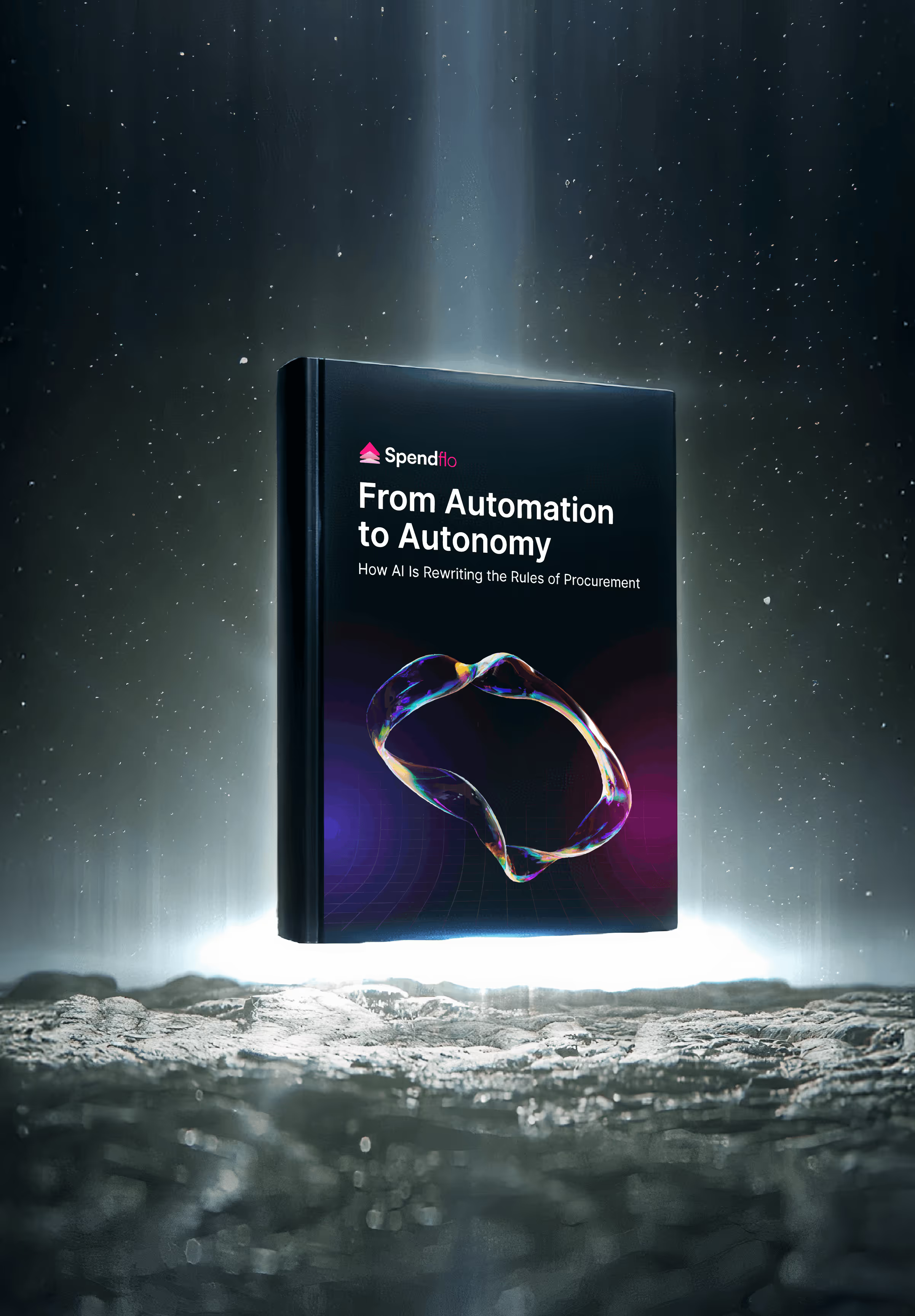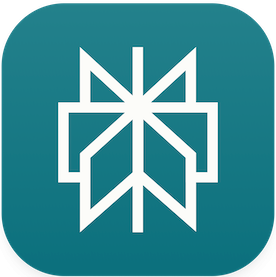

Blanket Purchase Order (PO): A Complete Guide in 2025

Blanket Purchase Order (PO): A Complete Guide in 2025
Learn everything you need to know about blanket purchase orders, including when to use them, what to include, and best practices for managing them effectively.


“Nearly 65% of procurement teams say managing repeat purchases takes up too much manual effort,” notes a recent Deloitte report. As organizations grow, maintaining visibility and control over recurring expenses becomes a major challenge.
That’s where blanket purchase orders (BPOs) come in. They simplify repetitive buying, cut down paperwork, and lock in better pricing through long-term agreements. In this guide, we’ll break down what a blanket PO is, how it differs from a standard PO, and why adopting this approach can make procurement faster, smarter, and more cost-effective for your business.
What Is a Blanket Purchase Order?
A blanket purchase order (BPO) is a long-term agreement between a buyer and a supplier to purchase goods or services at pre-negotiated prices and terms over a specific period. It covers multiple deliveries under one contract, reducing paperwork and improving procurement efficiency.
Key Characteristics of a Blanket Purchase Order
A blanket purchase order (PO) is a long-term agreement that simplifies repeat buying and saves time for both buyers and suppliers. Instead of raising a new PO every time, you set up one contract that covers multiple orders over several months, usually six months to a year.
Here’s what makes it effective:
Key Components of Blanket Purchase Order
A well-structured blanket purchase order (BPO) sets clear expectations for both buyers and suppliers. It prevents confusion, reduces compliance risks, and ensures smooth, recurring procurement. Below are the essential components that every BPO template in 2025 should include.
1. Basic Details
PO Number: A unique identifier assigned by the buyer’s procurement system to track and manage the order from start to finish.
Buyer and Supplier Information: Include full legal names, addresses, and contact details of both parties. This helps maintain transparency and ensures accountability.
Detailed Description of Goods or Services: List product or service specifications, quantities, part numbers, and any service-level agreements (SLAs). Add acceptance criteria or performance standards where relevant.
2. Financial and Delivery Terms
Maximum Quantity or Spend Limit: Defines the upper threshold on quantities or total spend allowed within the agreement. This helps manage budgets and prevents overspending.
Pricing and Payment Terms: Clearly outline pre-negotiated prices, discounts, and payment terms such as Net 30 or Net 60. Fixed pricing also supports better financial forecasting.
Delivery Terms and Schedule: Specify delivery frequency (weekly, monthly, or quarterly), shipping addresses, and expected lead times. Include Incoterms if applicable to clarify shipping responsibilities.
3. Performance Reporting and Change Order Procedures
BPO Reporting Requirements: Add clear reporting requirements such as monthly delivery summaries, quality performance metrics, and SLA compliance reports. Regular performance tracking ensures that suppliers meet agreed standards and deliver consistently.
Change Order Procedure (Blanket PO): Define how changes to pricing, scope, or delivery are handled. Outline how change requests are raised, reviewed, and approved. Every update should be documented to maintain clarity and compliance.
Signature and Approval Blocks: Include signature fields for authorized buyer and supplier representatives. A signed blanket purchase order ensures legal enforceability and clear accountability on both sides.
4. Contract Governance and Risk Management
BPO Cancellation Policy: Specify when and how the agreement can be terminated. Common triggers include supplier underperformance, pricing changes, or breach of terms. Note the required notice period before termination and the process for closing open orders.
Dispute Resolution and Exit Clause: Establish an escalation path for handling conflicts for example, manager → legal → arbitration. Include exit obligations like data handover, final invoice submission, and asset returns. Clear dispute resolution procedures and BPO exit clauses help prevent misunderstandings and ensure smooth contract closure.
5. Period of Performance
Define the start and end dates of the agreement. This confirms how long the BPO remains valid and helps both parties plan recurring deliveries effectively.
Blanket PO vs. Planned PO vs. Contract PO: Key Differences
Choosing the right purchase order type helps procurement teams manage budgets, forecast spending, and build stronger supplier relationships. While blanket POs, planned POs, and contract POs share some similarities, they serve distinct purposes based on how often and how predictably you buy.
Here’s a breakdown of the main types of purchase orders in 2025 and when to use each:
Types of Blanket Purchase Orders: Value-Based, Quantity-Based, and Service-Based
A blanket purchase order (BPO) can be structured in several ways depending on what you’re buying and how often you buy it. The right BPO structure in 2025 helps procurement teams maintain control, forecast spend accurately, and simplify vendor management.
Below are the main types of blanket POs you’ll encounter:
Why It Matters
Understanding the types of blanket POs helps you design agreements that match your organization’s spend patterns.
- A value-based blanket PO ensures budget control and flexibility when demand fluctuates.
- A quantity-based blanket purchase order keeps supply consistent without renegotiating each shipment.
- A service-based BPO supports ongoing relationships where scope and time can vary, such as with vendors or consultants.
Potential Challenges of Blanket Purchase Orders
Challenges include demand forecasting, supplier performance management, contract management, change management, stakeholder alignment, systems integration, and risk management.
Some of the most important challenges that needs to be addressed are:
1. Accurate demand forecasting:
One of the biggest challenges with blanket POs is accurately predicting the total quantity or spend needed over the PO term. Overestimating can lead to excess inventory, obsolescence, or wasted spend, while underestimating can result in shortages, expediting costs, or the need for supplemental POs. Procurement teams must work closely with end-users and analyze historical data to develop reliable forecasts, building in some flexibility for unexpected changes.
2. Supplier performance management:
With a longer-term commitment, it's critical to monitor the supplier's performance closely and address any issues promptly. Procurement teams should establish clear performance metrics and SLAs upfront, such as on-time delivery, quality, responsiveness, and cost. They should conduct regular performance reviews with the supplier, discussing any deviations and improvement plans. Teams must also have a structured process for escalating and resolving performance issues, up to and including termination of the PO if necessary.
3. Contract management:
Blanket POs are a form of contract and require careful management to ensure compliance and minimize risk. Procurement teams must track key dates, such as expiration and renewal deadlines, and ensure all terms and conditions are being met. They must also maintain accurate records of all PO documentation, amendments, and communications.
Mitigate Over-Commitment with Flexible BPO Terms
To balance efficiency with control, organizations can design flexible blanket PO terms that allow adjustments without disrupting supply continuity. Here are a few ways to strengthen BPO risk mitigation strategies:
1. Include a Price Adjustment Clause (BPO)
Add a market price clause that allows price revisions if market rates decline during the PO term. This protects against inflated costs and ensures pricing remains fair over time.
2. Set Soft Limits with Approval Workflows
Define soft thresholds for spend or quantity within your BPO. Any overages should trigger an approval workflow before additional commitments are made, helping maintain oversight.
3. Use Quarterly Reviews for Adjustments
Schedule quarterly supplier reviews to assess usage, pricing, and delivery performance. These meetings create opportunities to adjust volumes, renegotiate terms, or terminate early if business priorities shift.
Benefits of Blanket Purchase Order
A blanket purchase order (BPO) offers a range of strategic benefits that can streamline procurement and drive cost efficiency. It reduces repetitive tasks, simplifies vendor management, and helps companies gain better control over recurring purchases. Here are some key advantages of using blanket POs in your procurement strategy:
1. Reduces Administrative Overhead
With a blanket PO, there's no need to create a new purchase order for every transaction. Instead, one agreement can cover multiple purchases over time. This cuts down on repetitive paperwork, reduces errors, and frees up your procurement team to focus on more strategic tasks.
2. Secures Consistent Pricing
Blanket POs lock in pre-negotiated prices for the duration of the agreement. This shields your organization from price fluctuations and allows for better financial forecasting and budgeting - especially for high-volume or long-term procurement needs.
3. Improves Vendor Relationships
Having a long-term contract in place fosters stronger partnerships with suppliers, promoting consistency in pricing and service levels. It gives vendors more predictable demand, while buyers benefit from prioritized service, better support, and potentially more favorable terms due to the ongoing relationship.
4. Streamlines the Approval Process
Instead of going through approval workflows for each new order, the blanket PO is approved upfront. This speeds up the purchasing process for subsequent orders, process for subsequent orders, allowing teams to get what they need faster while staying compliant with procurement policies.
5. Enhances Spend Visibility and Control
Blanket purchase orders make it easier to track cumulative spend with a supplier over time. This simplifies purchase order management, improves transparency and accountability - making it easier for finance and procurement teams to monitor usage, avoid maverick spending, and stick to budgets.
6. Supports Agile Business Needs
For businesses with fluctuating or seasonal demand, blanket POs offer the flexibility to adjust quantities and delivery schedules as needed - without renegotiating contracts or issuing new POs every time.
When to Use a Blanket Purchase Order?
Use a blanket purchase order when you have a recurring need for specific goods or services from a single supplier over an extended period, and you want to streamline the procurement process, lock in favorable pricing and terms, and build a stronger supplier relationship.
Let’s have a deeper look:
- When you have a consistent, ongoing need for specific goods or services from a single supplier. This could include raw materials for manufacturing, office supplies, or professional services.
- When you can reliably estimate the total quantity or spend amount needed over the PO term, even if the exact delivery dates or quantities per order are not known upfront.
- When you want to lock in favorable pricing and terms for a set period to protect against market fluctuations. This is especially beneficial for critical or high-volume purchases.
- When you have a strong, proven relationship with a supplier and are confident in their ability to meet your quality, delivery, and service requirements over an extended period.
- When you need better visibility into your long-term spend commitments for budgeting and forecasting purposes.
Before deciding to use a blanket PO, consider your historical spend patterns, the stability of your demand, the maturity of your supplier relationships, and your procurement team's capacity to manage long-term agreements.
Blanket Purchase Order Process Flow
A Blanket purchase order flow usually consists of these steps: Identify need, develop requirements, select supplier, negotiate terms, create and issue PO, place releases, receive and inspect, process invoices, monitor performance, manage changes, and close or renew.
Here's a more detailed breakdown of the typical process flow for establishing and using a blanket purchase order:
Step 1. Identify the need:
The procurement team, in collaboration with end-users and budget owners, identifies a recurring need for specific goods or services that could be suitable for a blanket PO. They consider factors such as historical spend, demand patterns, and supplier market.
Step 2. Develop requirements:
The team develops detailed specifications and requirements for the goods or services, including quality standards, SLAs, and any specific delivery or service needs. They engage stakeholders to refine and validate the requirements.
Step 3. Conduct market research:
The procurement team researches potential suppliers who could meet the requirements, considering factors such as supplier capabilities, capacity, pricing, and past performance. They may issue a request for information (RFI) or request for proposal (RFP) to gather information and proposals from suppliers.
Step 4. Evaluate and select supplier:
The team evaluates the supplier responses against the requirements and selection criteria, which may include price, quality, delivery, service, and risk factors. They may conduct supplier site visits, reference checks, or negotiations to finalize the selection.
Step 5. Negotiate terms:
The procurement team negotiates the specific terms and conditions of the blanket PO with the selected supplier, including pricing, discounts, deliverables, performance metrics, and any special clauses. They work with legal and finance to ensure the terms are acceptable and compliant.
Step 6. Create blanket PO:
The procurement team creates the blanket PO in their procurement system, populating all the agreed-upon details and terms. They route the PO for internal approvals, which may include budget owners, department heads, and finance.
Step 7. Issue PO to supplier:
Once approved, the buyer sends the blanket PO to the supplier, who reviews and acknowledges receipt. The supplier may need to provide a formal acceptance or sign the PO, depending on the terms.
Step 8. Close or renew:
As the blanket PO approaches expiration, the procurement team evaluates the ongoing need and the supplier's performance. They decide whether to renew the PO for another term, renegotiate the terms, or let it expire and start a new procurement process. They work with the supplier to ensure a smooth transition.
Analyze Historical Spend to Identify BPO Candidates
Before creating a blanket PO, conduct a thorough historical spend analysis (BPO) to pinpoint opportunities that fit the model. This step forms the foundation for strategic procurement spend analysis and helps ensure the BPO delivers measurable savings.
Here’s how to identify the right BPO opportunities:
1. Review past invoices for recurring purchases
Examine payment records and past invoices to spot repetitive purchases like SaaS licenses, recurring maintenance, or office supplies that occur throughout the year.
2. Identify consistent vendors
Look for suppliers with stable pricing, dependable delivery, and proven performance. These vendors make strong BPO candidate identification options for long-term agreements.
Leverage spend data to forecast demand Use spend data for blanket PO creation to project annual usage volumes. These insights help procurement teams negotiate better terms, such as volume discounts or improved SLAs.
Best Practices for Blanket Purchase Orders
To effectively implement and manage blanket purchase orders, procurement teams should follow these best practices:
1. Conduct thorough supplier due diligence:
Blanket POs involve a significant commitment to a single supplier, so it's critical to thoroughly vet potential suppliers before signing an agreement. Procurement teams should assess suppliers' financial stability, operational capabilities, quality track record, and references. They should also consider the supplier's ability to scale and adapt to changing needs over the PO term.
2. Negotiate favorable terms:
Blanket POs offer an opportunity to negotiate favorable pricing and terms, leveraging the long-term commitment and volume. Procurement teams should seek to secure discounts, rebates, or other incentives based on spend volume or growth. They should also negotiate flexible terms that reflect current market value around pricing adjustments, quantity changes, and termination rights to mitigate risks.
3. Set clear performance metrics and SLAs:
To hold suppliers accountable and drive continuous improvement, procurement teams should establish clear, measurable performance metrics and SLAs in the blanket PO. These may include on-time delivery, quality, responsiveness, and cost savings targets. Teams should also define the consequences for missing targets and the incentives for exceeding them.
Automating Blanket PO Management with Procurement Software
Managing multiple releases, invoices, and renewals manually can quickly become overwhelming. That’s where BPO automation software comes in. Modern procurement software for BPO helps streamline every step from creating release orders to tracking spend in real time so teams can stay compliant and efficient without juggling spreadsheets.
Here’s how automation simplifies the process:
1. Create Release POs Against the Master BPO
Once a master blanket purchase order is approved, procurement teams can generate release POs against the blanket PO for each new delivery or service request. This ensures that every purchase is automatically linked to the master contract, maintaining visibility into total spend and commitment levels.
Automated workflows let teams issue releases quickly, track approvals, and update balances in real time saving hours of manual work.
2. Ensure 3-Way Match for Accuracy
Automated systems support 3-way match BPO verification by reconciling three documents automatically:
- The release PO
- The goods receipt or service confirmation
- The supplier invoice
This matching process ensures accuracy and prevents duplicate or fraudulent payments. It also strengthens audit compliance, since every transaction is validated against the original blanket PO terms.
3. Track Spend in Real Time to Prevent Overruns
Modern procurement software for BPO provides dashboards that display live spend data against the total contract value. Real-time BPO spend tracking alerts users when they approach budget thresholds or exceed quantity limits, helping avoid over-commitment and overspending.
This level of visibility allows finance and procurement teams to stay proactive reviewing usage trends, managing renewals, and negotiating better terms before limits are reached.
4. Automate Renewal Alerts and Reviews
With automated BPO management, renewal dates and contract expirations are never missed. The system sends timely alerts before a BPO’s end date, prompting teams to review performance, assess supplier fit, and renew or renegotiate early.
These alerts ensure smooth transitions between contract terms while minimizing operational disruptions.
Use Cases of Blanket Purchase Orders
To understand how blanket purchase orders work in practice, let’s look at a few BPO use cases for 2025 across different business functions. Each example shows how a long-term agreement can simplify recurring spend and strengthen supplier relationships.
How Spendflo Can Help Optimize Your Blanket PO Process
Managing blanket purchase orders efficiently isn’t just about good intentions, it’s about control, accuracy, and speed. Many procurement teams still struggle with manual tracking, unclear spend visibility, and time-consuming renewals. The result? Missed savings and untracked vendor commitments that add up fast.
That’s where Spendflo comes in!
When a mid-market SaaS company used Spendflo to automate its BPO management, it gained full visibility into supplier contracts and renewals within weeks. The procurement team reduced manual data entry by 60% and saved over $300,000 in unnecessary renewals through real-time tracking and contract optimization.
This is what strategic procurement looks like in action, simplified, measurable, and transparent.
If your team still juggles spreadsheets, manual approvals, and renewal surprises, it’s time to change that. Spendflo’s SaaS procurement platform gives you:
- Centralized dashboards for complete visibility into every blanket PO
- Automated approval and renewal workflows
- Spend and usage tracking that surfaces savings opportunities early
- Policy enforcement and audit-ready documentation for compliance confidence
Don’t let inefficient BPO management drain your time and budget. Take control, eliminate guesswork, and start driving savings today.
Book a demo with Spendflo to see how you can automate your blanket PO process and achieve guaranteed savings within the first quarter.
Frequently Asked Questions on Blanket Purchase Orders
What is the difference between a purchase requisition and a blanket purchase order?
A purchase requisition is an internal request to procure goods or services, while a blanket purchase order is an approved, long-term agreement with a vendor for recurring items. The requisition initiates the purchase cycle; the blanket PO streamlines it by covering multiple transactions under one agreement.
How does a blanket purchase order support cost optimization?
Blanket POs help procurement departments lock in fixed pricing and reduce administrative overhead. By forecasting demand and consolidating purchases, businesses can negotiate better contract conditions and reduce costs compared to paying fluctuating market rates for individual orders.
Can finance teams track spending better with blanket POs?
Yes. Blanket purchase orders offer greater visibility into long-term commitments, enabling finance teams to forecast budgets accurately. With integration into automated systems, invoice processing becomes more efficient, reducing manual errors and improving compliance with financial policies.
Why is a purchase order number important in blanket POs?
A unique purchase order number helps track every transaction tied to a blanket PO. It allows procurement teams and inventory management systems to monitor usage, ensure order accuracy, and match invoices during the invoice management process.
What types of purchase orders should businesses consider?
The main types include standard purchase orders (POs), planned POs, contract POs, and blanket POs - each designed for different procurement scenarios. Blanket POs are ideal for recurring purchases, while standard POs are suited for one-time transactions. Choosing the right type helps align procurement with your broader business process and goals.
How do blanket purchase orders benefit inventory management?
Blanket POs improve inventory control by allowing scheduled, predictable deliveries. This reduces the risk of overstocking or shortages and ensures that recurring items are available as needed. It also aligns purchasing with actual inventory consumption.
Can blanket POs be used for consulting services?
Absolutely. Many companies use blanket purchase orders for recurring consulting services that span several months. This ensures timely service delivery, predictable billing, and efficient source to pay automation - especially when paired with a robust invoice management system.










.png)




.png)










.avif)





